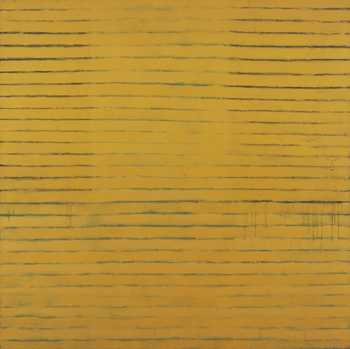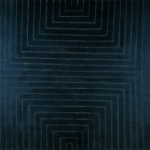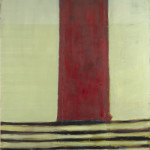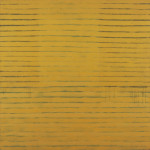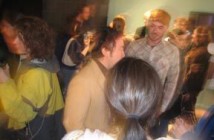When asked to review the Frank Stella: 1958 exhibition at the Sackler Museum at Harvard University, I kept asking myself whether the current generation of painters would be interested in Frank Stella's work, let alone a body of work from a single year? After all, the Sackler billed the exhibition as an educational opportunity for students, but I kept wondering what kind of students? Art historians, curators, artists? Most contemporary painters hardly remember or care about the notion of "the end of painting" for which Frank Stella's most famous Black Paintings are known and discussed. For many painters today, there are very few rules and scarcely any formal problems to solve beyond the ones they create and set up for themselves. The result is that painting is driven by the pictorial image more than ever.
So how do we look at Stella's paintings, or formalist abstraction for that matter, today? Can they be experienced without the weight of the past behind them or is that central to their reception?
The 1958 exhibition focuses on 21 of the 34 surviving paintings, drawings and reliefs that Stella made in 1958 which led to his big breakthrough exhibition at the Leo Castelli gallery in 1959. Hung snugly in the Sackler's lower gallery, the paintings allude both to the Black Paintings and to his painted metal reliefs to come decades later. The exhibition aims to give insight into Stella's development that was anything but linear and certain.
Entering the gallery, the first thing I noticed is how close all the paintings are hung, especially for a gallery with very low ceilings. The space is very cramped and it keeps the viewers in close proximity to the works. This helps emphasize the profile of many of the canvases, most of which are 3 to 4 inches deep from the wall. The deep profile is one of Stella's signature moves and to me one of the sources of the whole issue of whether painting is more object than illusion. Many of them look massive resting on the walls, relating to a strong sculptural presence. One piece, Astoria, a bright yellow ochre painting, seems almost to collapse under its own weight. A thickly painted surface with horizontal bands of blue-black bleeding through and a shadowy oblong block shape near the top, Astoria is one of many huge canvases in the exhibition.
Looking around the gallery, a recurring motif begins to emerge: Almost every work in the show has some kind of horizontal bands or divided areas that are disrupted by an oblong block, either as an under-painting or as a primary shape. This includes the relief paintings such as Them Apples and Untitled, both of which are painted on cardboard and nailed to wooden boards and supports. In some works the block shape is either painted over or out, or re-emerged as pentimenti. The titles of many of the works in 1958 allude to landscape or urban locations in New York City keeping the increasingly minimalist paintings grounded. Paintings such as Red River Valley, Great Jones Street or Coney Island call to mind names and places in and around Stella's studio at the time.
The breakthrough for Stella comes when he stops using the square shape and turns the horizontal lines vertical toward the edges. This causes the paintings to flatten out and move away from figure/ground relationships that dominate picture making. He also simplifies his palette, using black and then leaving the stripes as bare canvas. Morro Castle is one of the best examples of this and one of the earliest Black Paintings in the exhibition.
Although, Frank Stella has never been known to be a great painter (in the touch sense of the brush), 1958 shows Stella starting to push problems of form to the extreme. This exhibit does no service to his painting skills though. Many of the paintings are sloppily handled, look partially finished and are downright clumsy. He, like many painters in NYC at that time, was de-skilling painting with the hope of reinventing it. Many of the paintings in 1958 are painted in industrial, enamel and household paints, something he continues to use to this day.
Yet where 1958 fails it also succeeds. The paintings give us incite into his creative process, especially for his later paintings that exercise far greater discipline both technically and conceptually. Although, I cannot help but think that 1958 would hold little interest for contemporary painters who accept abstraction as a given. Yet this wasn't always so. Today's artists have moved past abstraction by itself and into a zone of deep image manipulation through digital code, recycled photos and old master techniques. Yesterday's formal issues and all the debates about them provide a context for these paintings. I just wonder whether we have the time to notice.
Links:
Arthur M. Sackler Museum, Harvard University
"Frank Stella 1958" is on view February 4 through May 7, 2006 at The Arthur M. Sackler Museum, Harvard University.
All images are courtesy of the artist and The Sackler.

